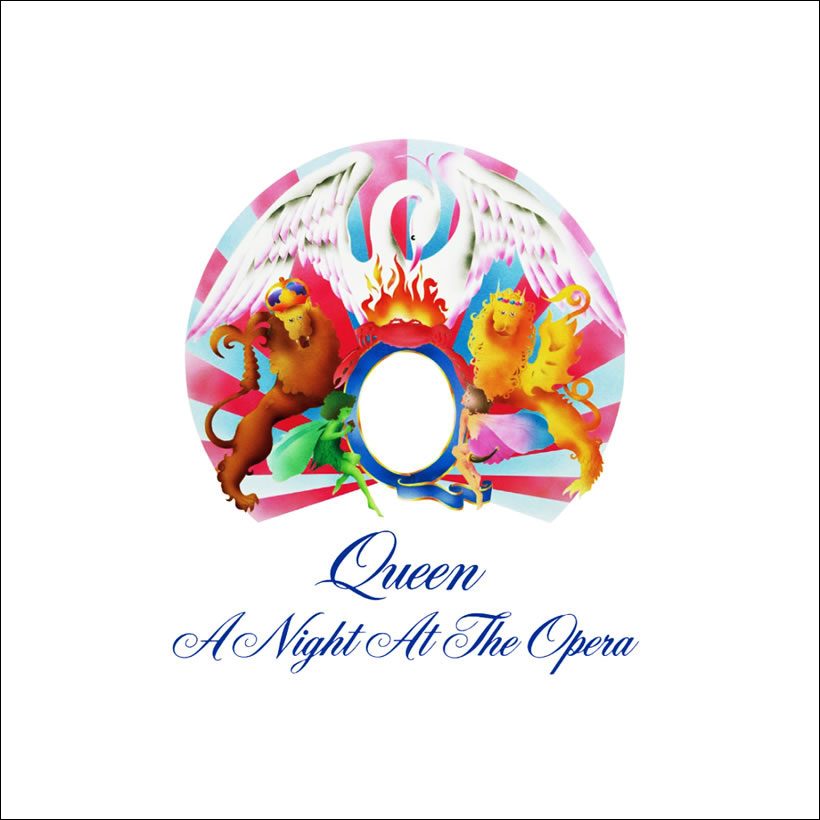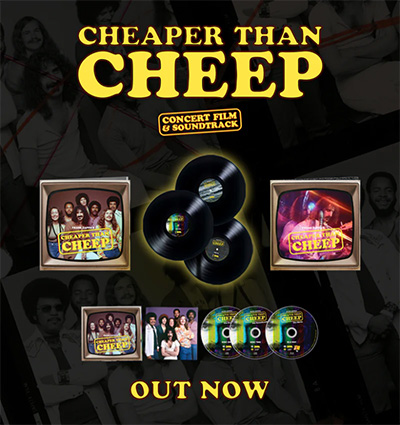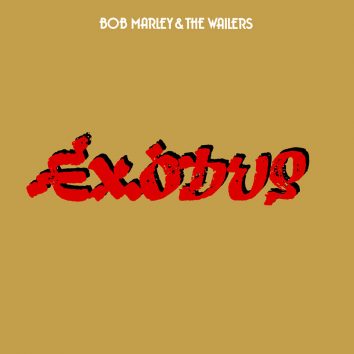A Night At The Opera: Queen’s Regal Invite Could Not Be Ignored
From its title to the music, ‘A Night At The Opera’ is majestic.

The UK tour to support the release of Sheer Heart Attack got underway during the autumn of 1974, and after taking in Europe and America, it finished at the Budokan in Tokyo, Japan, on May 1, 1975. Between the band’s return and the start of another UK tour on November 14, 1975, Queen recorded the album that would turn them from big stars to superstars. Work on Queen’s fourth album, another co-produced by the band along with Roy Thomas Baker, began in August 1975, and it was only finished shortly before the opening date of their tour at Liverpool’s Empire Theatre on November 14. A Night At The Opera, as we all now know, is a masterpiece. Everything from its title (one that is borrowed from The Marx Brothers 1935 movie) to the music, the album’s artwork, and the whole pomp and circumstance of the entire package is majestic.
Listen to A Night At The Opera right now.
John, Roger, Brian, and Freddie took much-needed holidays before work on the new project began in earnest with a three-week writing and playing session in a rented Herefordshire house. They then decamped over the Welsh Marches once more to Rockfield. The band later worked in five more studios (Roundhouse, Sarm East, Scorpio, Lansdowne, and Olympic) in their pursuit of perfection, and in so doing, their own self-belief was fully justified.
The 12 tracks that make up A Night At The Opera comfortably broke the 43-minute mark, and like its predecessor, the sequencing of this record creates its own dynamic. This is an album that should be listened to in its entirety rather than through the unpredictability of random play and shuffle.
Queen made the most of the 24 track set-ups Baker brought to the table, and along with the engineer, the late Mike Stone who sadly passed away in 2002, they collectively created a great sounding record. It opens with “Death On Two Legs (Dedicated To…),” a barely veiled and acerbic open letter to a businessman contact, which was actually given its finishing touches immediately before release. It’s one of Freddie’s sharpest lyrics, so vicious that Brian May wasn’t too thrilled to even have to sing the words.
Freddie’s “Lazing On A Sunday Afternoon” continued to showcase his piano playing skills and his growing confidence on keyboards helped to make the whole album so much better. There follows a neat transition into Roger Taylor’s “I’m In Love With My Car,” a paean to speed and auto fixation that would one day be used as the sound-bed for a Jaguar TV advert, meanwhile offering itself as a serious love song. It was also used as B-side to “Bohemian Rhapsody,” but only after Roger allegedly locked himself in a cupboard at Sarm Studios until the others laughingly agreed to it.
More new ground is broken by John Deacon’s “You’re My Best Friend,” which in 1976 became the eminent bass man’s first composition to be released as a Queen single, and a hit at that. Very much John’s baby, he even supplies the Wurlitzer organ.
Brian May’s “39” is his first composition to appear on this album and it is a science fiction come space travel number that is a reminder of his learned interest in astrophysics and astronomy in general. Given the song’s weird skiffle arrangement, Brian asked Deacon to play double bass, and the number was included in Queen’s set-list by 1976, becoming an instant crowd favorite.
Brian’s “Sweet Lady” accentuated the almost willful diversity of Queen at this point in their career, with its live rhythm section and heavily distorted rock thrash in ¾ time. Mercury’s “Seaside Rendezvous” is another track that shows the band’s inventiveness, since Freddie and Roger provide a woodwind section performed by just their voices, along with a tap-dancing sequence they performed on the mixing desk with thimbles over their fingers.
The second side of A Night At The Opera commences with Brian’s lengthy, “The Prophet’s Song,” that was inspired, if that is the right word, when he was feverish with hepatitis during the Sheer Heart Attack sessions. A heavy, moody piece, “The Prophet’s Song” was the ideal centerpiece for the forthcoming tour. Its Biblical atmosphere being accentuated by the guitarist’s use of the toy koto, a traditional Japanese stringed instrument more usually associated with experimental classical music.
Freddie’s often covered “Love Of My Life” (written for girlfriend Mary Austin) is a quite beautiful ballad, embellished with May’s harp, Roger’s delicate cymbals, and the predominant Gibson Hummingbird acoustic guitar – coincidentally purchased by Brian in Japan the previous spring.
Brian’s “Good Company” is one of his wise family pieces – a song full of sound values and mature reflection. Recorded with the ukulele and his trusty Red Special to hand, their overlapping mimics a traditional Dixieland jazz band feel; the poignant narrative has a twist in the tale.
And so to the colossal, the monumental (adjectives can barely do this song justice), “Bohemian Rhapsody.” Composed in six sections, mostly by Mercury in his Holland Park home, this was the song that divided opinion even within the ranks. Surely they couldn’t expect to get away with this? Mercury was certain of its merits, but seldom gave much away concerning the lyrical structure and the references to classic opera, Old Testament seers, and the principal characters Scaramouche and Galileo.
If pressed, Freddie would say: “It’s one of those songs which has such a fantasy feel about it. I think people should just listen to it, think about it, and then make up their own minds as to what it says to them… “Bohemian Rhapsody” didn’t just come out of thin air. I did a bit of research although it was tongue-in-cheek and mock opera. Why not?”
But if he kept his reasoning private, the public response was amazing, especially when he cunningly gave a pre-release tape to DJ friend, Kenny Everett, with a winking, “But you’re not allowed to play it on air in its entirety.” Naturally, Everett ignored that demand, as Mercury knew he would, and played it fourteen times in two days. The panning, the layer upon layer of vocals, the gongs and tympani – hell, the band’s very own operatic chutzpah – this is one of those songs that everyone knows, but that once listened to again, even in hindsight, still baffles and delights.
Ironically, prior to releasing it as a single, one senior EMI executive was convinced that it was too long and he tried to convince the band that it needed to be edited if it was to stand any chance of getting any radio plays.
Mixing the gloriously bombastic with the sweetly simple, May’s guitar solo is bang on the money. “Bohemian Rhapsody” was very much “Freddie’s thing” and also his tour de force, containing as it did elements of works in progress from earlier ventures.
As if the song wasn’t visual enough, it was accompanied by a ground-breaking video, and while it was said to be the most expensively constructed single made to that point in time, it recouped in full, and then some.
And that wasn’t the end of the affair, and there was only one way to follow it. A revisit to May’s arrangement of the National Anthem, “God Save The Queen” (surely that didn’t go unnoticed in Sex Pistols circles either); it was something they’d been using as a tour finale for some time. Instrumental, multi-layered and strangely affecting, May would achieve a kind of lifetime ambition many years later when he performed it from the roof of Buckingham Palace for the Queen’s Golden Jubilee in 2002; it was also a kind of homage to Jimi Hendrix’s Woodstock version of “The Star-Spangled Banner.”
And so the album was released on November 21, 1975, and as a result, Christmas belonged to Queen. The sold-out tour that had begun a week before the album’s release culminated with a Christmas Eve concert at Hammersmith Odeon that was videotaped and broadcast by the BBC on The Old Grey Whistle Test. Their North American tour kicked off in the fourth week of January and this too proved to be a triumph. A Night At The Opera soared to No.4 on the Billboard album chart and “Bohemian Rhapsody” became the band’s first top-ten single on the Hot 100 while Queen were touring America.
Following A Night At The Opera’s entry into the UK charts on December 15, 1975, there were many Christmas stockings filled with the album, and two days after Christmas, on December 27, it topped the charts. It stayed there over the New Year’s holiday before being replaced by Perry Como’s Greatest Hits for a week. So strong was the surge in sales, however, that Queen returned to the top spot for another two weeks. Meanwhile, “Bohemian Rhapsody” was at No.1 on the UK singles chart for nine weeks, beginning on November 29 and staying there until January 31 the following year. As we now all know, it would later return to the top spot at a far less happy time.















Geoff Powell
September 6, 2019 at 8:13 am
I just love all these Queen album reviews. They are clearly written by a big fan, but hey, Queen were an absolutely amazing band, and they deserve the kind of reviews they rarely got from the mainstream press at the time. Mssrs May, Mercury, Deacon and Taylor created something incredibly special with Queen, and it’s a testament to this band, that their popularity is still very high almost 50 years on!! I first heard this album in late 1975, when I was just 10 years old, and it was the start of a lifelong love affair with Queen. I have to admit it’s not my absolute favourite Queen album (that is jointly held by Queen II and A Day At The Races) but it’s an amazing album (I’m listening to it right now as I read this awesome review) and a very historical musical document for me. I will never forget the feeling of being almost 10 and pirouetting and prancing around my room singing the incomparable Bohemian Rhapsody. Seeing them perform live 4 nights in a row in 1885 was the dream of a lifetime come true. I cried the day Freddie died – he was one of the world’s true musical geniuses.
Great reviews guys. I’m reading every one and they are SPOT ON!
Diane G Pyle
December 27, 2022 at 7:21 pm
I have this album – my favorite. Diversified arrangements and songs. Love “Fat bottom girls and Sunday afternoon, I love my bicycle. Queen fan for ages. Thanks for keeping Queen alive and well.
John F
December 27, 2023 at 11:23 am
I thought it was a Fender Rhodes John Deacon played on ‘You’re My Best Friend’, not a Wurlitzer…